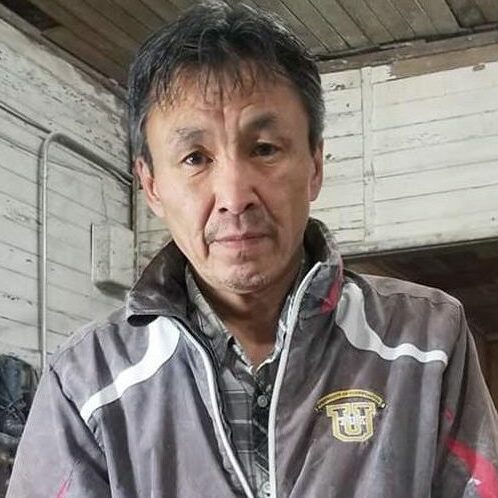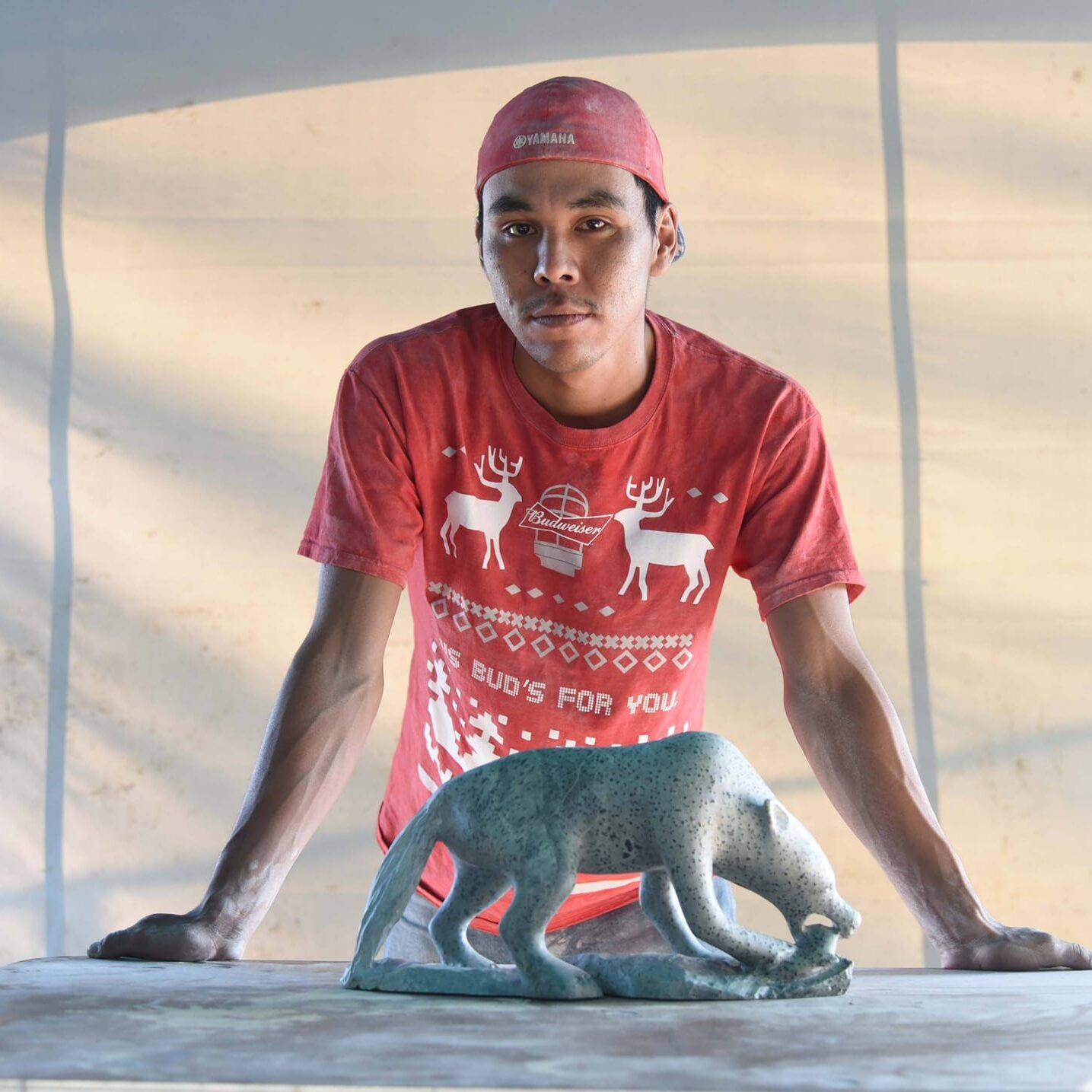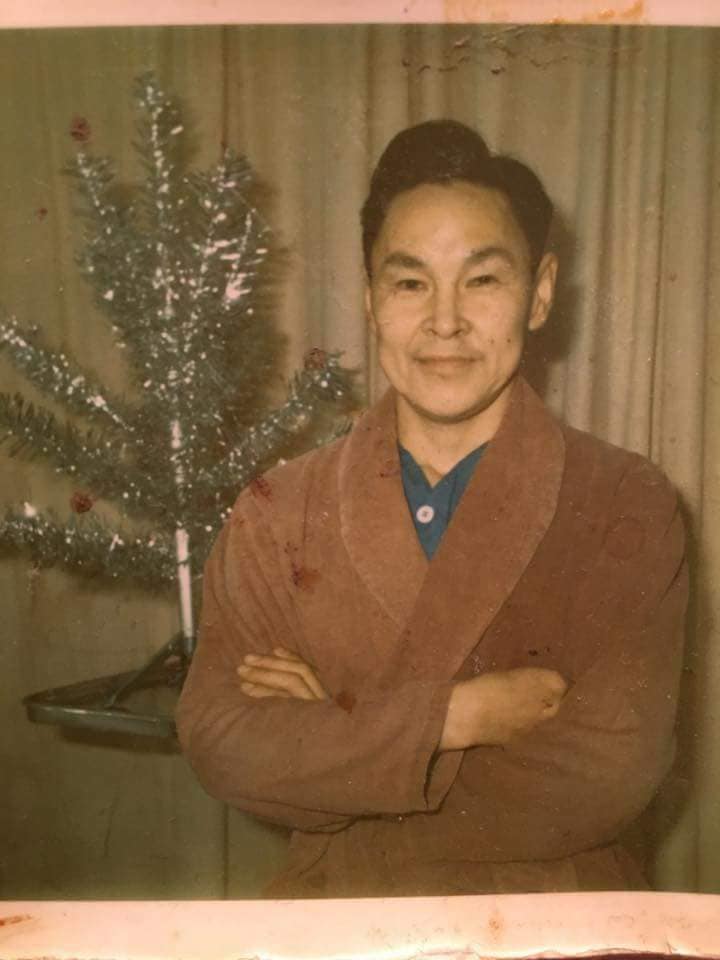
Our Story
A huge thank you to Tusaayaksat Magazine for this publish
Bobby’s legacy
Half a century after Bobby Taylor Pokiak first picked up a hand file, the carving tradition in his family remains strong
No one knows exactly why Bobby Taylor Pokiak started carving in Tuktoyaktuk in the sixties. Maybe someone showed him. Maybe he picked up the tools one day and realized he had a knack for it. The only fact that’s undisputed is that his decision influenced the lives of three generations of carvers to come.
“We don’t know. We honestly don’t know,” says Ryan Taylor, a full-time carver and Bobby’s youngest son. “I just remember my dad always had a carpenter glove on, a piece of antler in one hand, and a file in the other. That’s how I’ll remember him.”
Bobby passed away in 2005, but the carving tradition in the Taylor family lives on with his children, grandchildren and great-grandchildren who continue to carve to this day – and who receive recognition all over the world for their work.
At the age of 58, William Taylor is the oldest carver in the family. Derrald Taylor, working out of Frozen Rock Studio in Yellowknife, is probably the most well known. The youngest carver, at the age of 19, is Vaughn Taylor. Marion Taylor Pokiak is known for miniatures, multi-pieces and mobiles. Ryan Taylor for his muskox, kayakers and sleeping Sedna. Ronnie Taylor, now living in Kugluktuk, is renowned for his work with ivory. Derek Taylor is prolific at carving inuksuks. Mary Anne Taylor Reid can carve women sewing better than anyone. Curtis Taylor and his brother John, though both avid carvers, are young and still developing their styles, and carve a wide variety of figures. The same can be said for Greg Taylor, Ronnie’s son. Priscilla Taylor, who lives just outside of Calgary, is a full-time mother and a part-time carver. When he was still alive, Bobby Taylor Pokiak was known for his flying birds and crib boards.
Four Taylors – Ryan, Derrald, Ronnie and John – are full-time carvers, and countless more supplement their income with part-time or seasonal carving. “My dad worked hard for what he did,” Derrald says. “He grew us up all by what he did with his hands. I’d like to continue that.”
But why did the carving tradition infiltrate the family tree so deeply? To put it simply, it’s a family tradition.
Taylors grow up surrounded by carving. They watch their older brothers and sisters do it. They see their parents make a living from it. Eventually, most of them give it a try.
“We all start with hand tools, chisels, files and saws,” says Ryan, who still has the hand file his father Bobby gave him when he first started carving at 12 years old. Being the youngest child, Ryan followed in the footsteps of his older brothers Derrald and Ronnie, and watched them carve long before he started himself.
“I think it was Derrald who broke a bear carving and he didn’t want to finish it, so I glued it back together,” he explains. “Then Ronnie broke a seal and he didn’t want to finish it, so I glued it back together.” At the time, the Taylor Pokiak house in Tuktoyaktuk was a big draw for tourists, who would mill through the house, buying Bobby’s bone and antler creations. “So I glued those carvings together, put them on a little base, tourists came by and bought them. When you’re a young kid and you see money like that…that’s why I started trying to carve,” Ryan says.
John started carving at the age of 14 - first on his own, then with the guidance of uncles Derrald, Ronnie and Ryan, and parents William and Sheila. Now he’s living and carving in Yellowknife at Frozen Rock Studio alongside Ernest Raymond, Eli Nasogaluak, John Sabourin and his uncle Derrald. “It’s an experience. I’m picking up some different forms and details where they can teach me,” he says.
Derrald learned the basics from his father Bobby, and then taught himself by joining festivals, going to carving shows and working alongside carvers from different regions. Ronnie started carving at the age of 10, first trying to imitate his dad’s pieces, then making his own. Curtis says she learned from watching his dad, William. At the age of 13, his first carving was a kayak hunter. Priscilla says her main teacher was her mother, Mary Anne, although she got her start at the age of five sanding bases for her uncle Derrald. At the age of eight she completed her first carving, a walrus, which she sold to her teacher. “It was really wobbly but they were so in love with it. They wanted $20 for it, but I said since it’s wobbly it’s only $10.”
William, Bobby’s eldest son, started carving at the age of 10. “My dad was carving and he was making money. We wanted to make money for him too, try and help him out,” he says. His first carving was a seated bird made from antler, which he made by watching his dad carve and following along.
“My dad would sit down and carve for hours, sometime days, because he wanted to make some money for food. So that’s what he’d do. He would have a jigsaw and a hacksaw and about three files: a rough file, a round file and a flat file. It was survival to us. That was all survival. You know, it was a fast way to make money, and we needed some groceries, and we got a piece of stone. We look at that stone and we can make something out of it,” William explains. “There’s no one really that taught him. He done it on his own.”
When asked, most Taylors will say it’s important to teach the next generation in the family – but the unspoken rule is that you have to wait until their interest is piqued. No one in the family is forced into carving. “My dad was born with one of his mom’s rib bones and a file,” jokes Ryan. In actuality, most Taylor carvers start sanding, sawing and filing when they are children, and then transition to making their own pieces as pre-teens.
Derrald has taught his children, Dalynn, 17, and Aron, 12, the basics of carving, but doesn’t pressure them into joining him at the studio. “I don’t want to rush them into it and scare them away. I know there will come a time where hopefully they can sit with me and learn from me,” he says. “I’ll be proud the day I start seeing them carve.”
Curtis’s 10-year-old son Bobby, named for his great-grandfather, is likely to be one of the first fourth generation Taylor carvers. “He’s going to follow me. He’s going to be carving beside me,” Curtis explains. “He’s going to learn on his own. I’m going to let him learn his way, not my way.” Priscilla also has plans for her two daughters, Abrianna, two, and Jasmine, nine months. “The first step for them would be the sanding for sure. The second one would be the file. Then you go with making a whale or something easy,” she says. “Jasmine is already inspired by it too. She grabs sandpaper and rock and tries to sand it.”
In addition to learning from each other, the Taylors also work alongside carvers from across the North, trading techniques and sharing tips. Ryan credits Nunavut carver Inuk Charlie with inspiring him when he was younger, and Derrald has worked closely with ‘the Nasogaluak boys’ – Bill, Eli and Joe. “I like carving with other carvers,” Ronnie says. “I get to learn something from them, and they get to learn something from me.” As for Bobby, he often carved alongside Phillip Raymond and Jimmy Jacobson in Tuktoyaktuk.
Inuit art is a staple of the Canadian art scene. That's because when people buy Inuit art, they're not just the buying the piece, they're also buying the history behind it – and the Taylor name goes a long way.
“I lot of people come down looking for our work. They specifically ask for a Taylor,” says Ryan. The Taylors are stronger as a unit, and because of that their name carries a lot of weight.
The majority of Taylor carvings can be found across Canada and the United States, but many can be found in far off countries and continents like Japan, China, England, Australia, Switzerland, Russia, Mexico, South America and Africa. Others have been gifted to dignitaries visiting the Inuvialuit Settlement Region, like the Ryan Taylor kayaker given to Prime Minister Stephen Harper when he visited Inuvik in 2008.
One of the trademarks of a Taylor carving is the realism. They don’t just carve from the land – they live it too. “The Inuvialuit, we do realistic stuff. We go hunting on the land, so we know what the animals look like,” Ryan says. “We work with movement. You try to not make it look stiff, like a piece of rock.” Derrald agrees. “I try to carve the animals the way I see them. I’ll watch their movements, what they look like,” he says. “People ask how do we look at a rock and then make it into something so easily, so fast and so naturally. It’s second nature to us,” Priscilla adds.
“My dad was the number one Taylor that started everything, and he was the Taylor that made the Taylors. That’s all I can say about that,” William says. “We won’t let it go, because it’s a way of making money. It’s a way of survival. I don’t think we’ll ever let it go. Here in the North, you know, it’s hard to get good jobs, so carving is the best option. People like buying carvings, especially Taylor carvings.”
And how long will the tradition last?
Ask any Taylor, and they’ll answer the same way: “Forever.”
Meet the Taylor's
Each of us with our own uniqueness and craziness, we strive for one goal... to keep
"Bobby Taylor's Legacy"
Strong
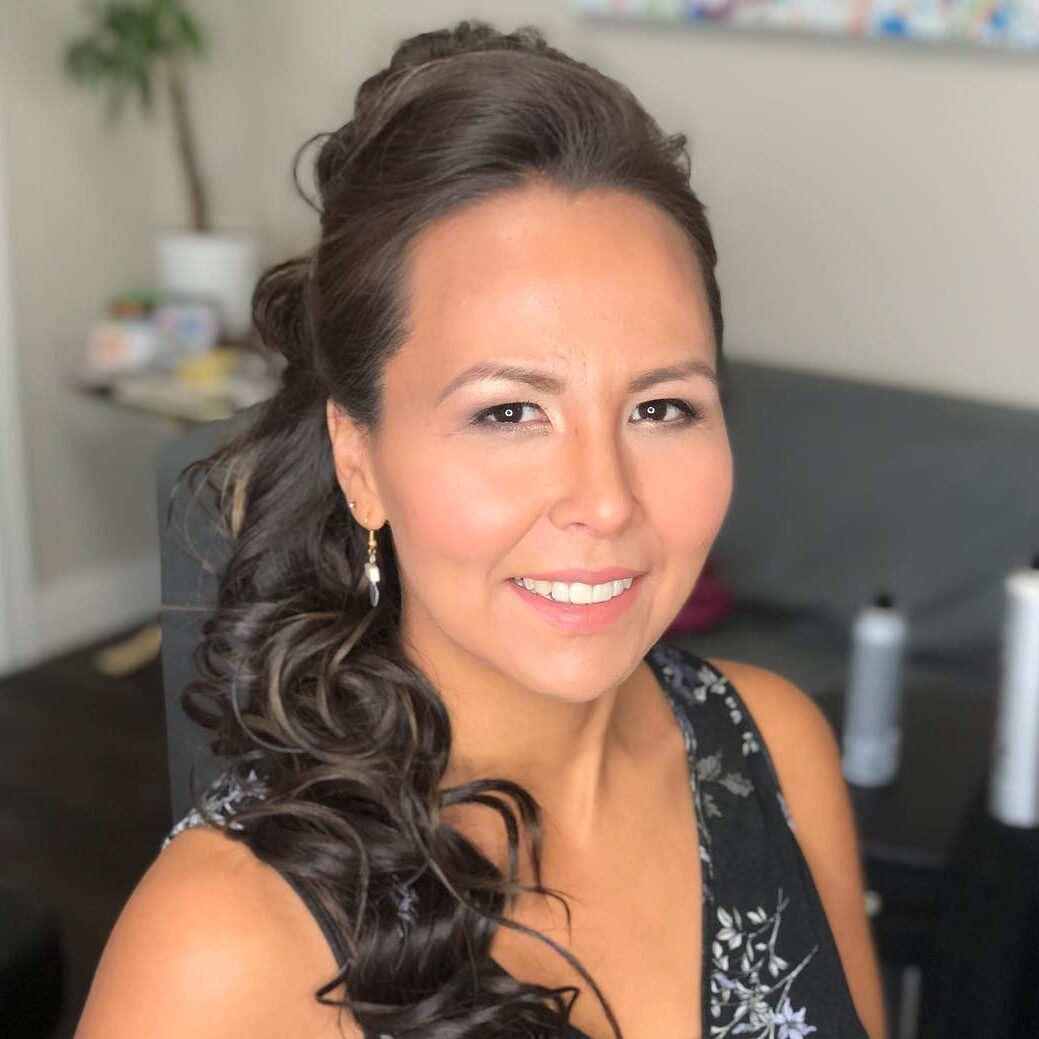
Priscilla Boulay
Artist and operator of
Inuvialuit Carvers
Born and raised in the Hamlet of Tuktoyaktuk in the Northwest Territories, Priscilla is first born of Maryanne Taylor-Reid. She started growing her knowledge and abilities to create Inuvialuit art at the age of 3 when her Uncle Derrald gave her a carving to sand and polish. Her talent was passed down from her late Daduck (Grandfather) Bobby Taylor Pokiak to her Mom, Aunts, Uncles and relatives.
Her style of carving is unique, yet it evolves from her views and experience of Inuvialuit traditions and beliefs including hunting and fishing, travelling and watching wild life in the Arctic. Living life right on the Coast of the Arctic Ocean has brought many lessons that enriched traditions. As Inuvialuit, they are from the western part of the Canadian Arctic, therefore have different traditions and art styles, from many other Indigenous communities.
After graduating high school, she went to college in Alberta and found her husband. They moved to Calgary, grew her family and had two daughters who are now learning their beautiful culture and legacy of their Great Grandpa.
With little traditional materials that they normally carve with, she took the pieces left from carving antlers, Ivory and Muskox Horn she started creating beautiful jewelry. With both carving sculptures and jewelry making to keep busy, its a learning curve to live urban Inuvialuk life and keep traditions going.
2024 Indigenous Entrepreneur EDC Award Recipient
ICC Inuit Artist of the Month Podcast Series – Priscilla Boulay
Taking It Global - Priscilla Boulay Fireside Chat
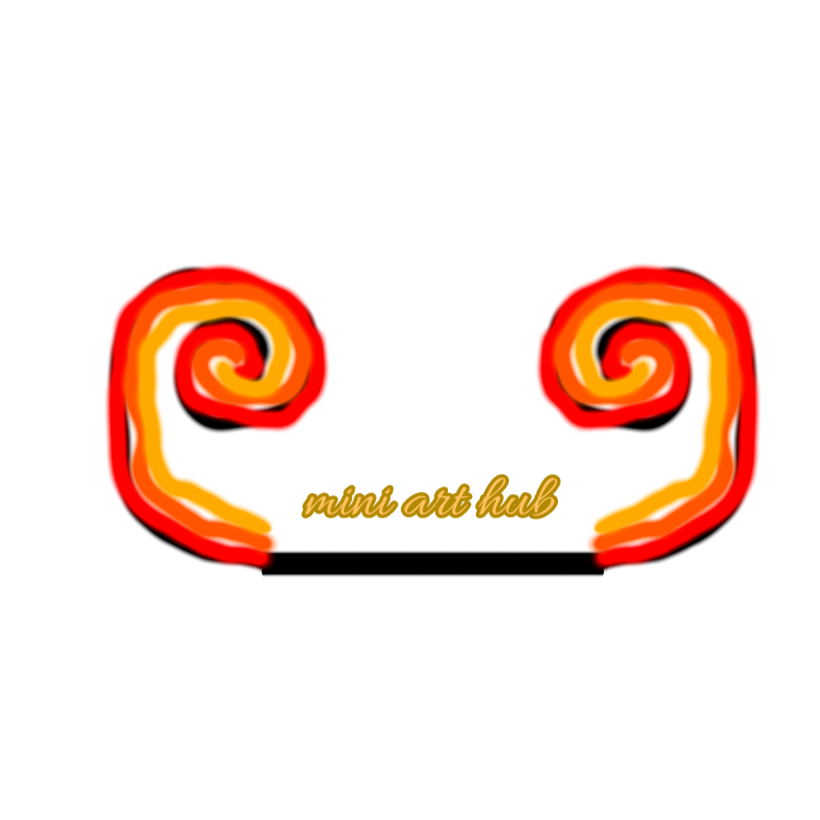
Mini Art Hub
Introducing my Daughter's Website I operate for her, she is an Entrepreneur in Training.
Thank you for your support for our Young and Future Artists!
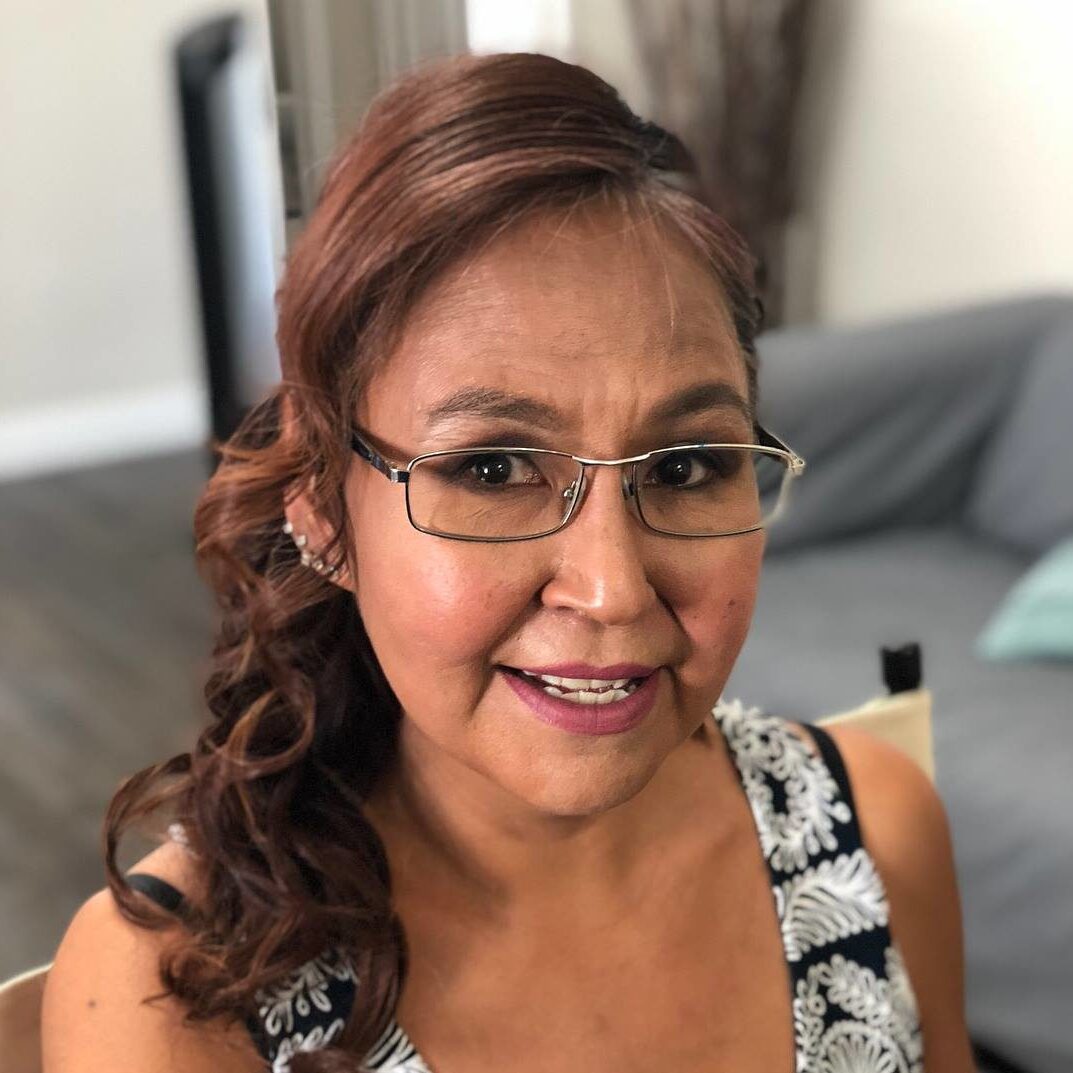
Maryanne Taylor Reid
My Mom
My Momma, she has been the one that taught me the most and brought me from stage one to the next possible step. She has been carving along side her brothers, nephews and children. Her well known piece is Mother sewing mukluks. She sits down with a long braided hair and a mukluk in the making with one other finished beside her
My Uncle was the first one to hand me a piece of carving at the age of 3 to go polish. He has his own carving shop in Yellowknife called Mother Earth Carving Studio
Well known for his bears, they are so real looking and so much detail!
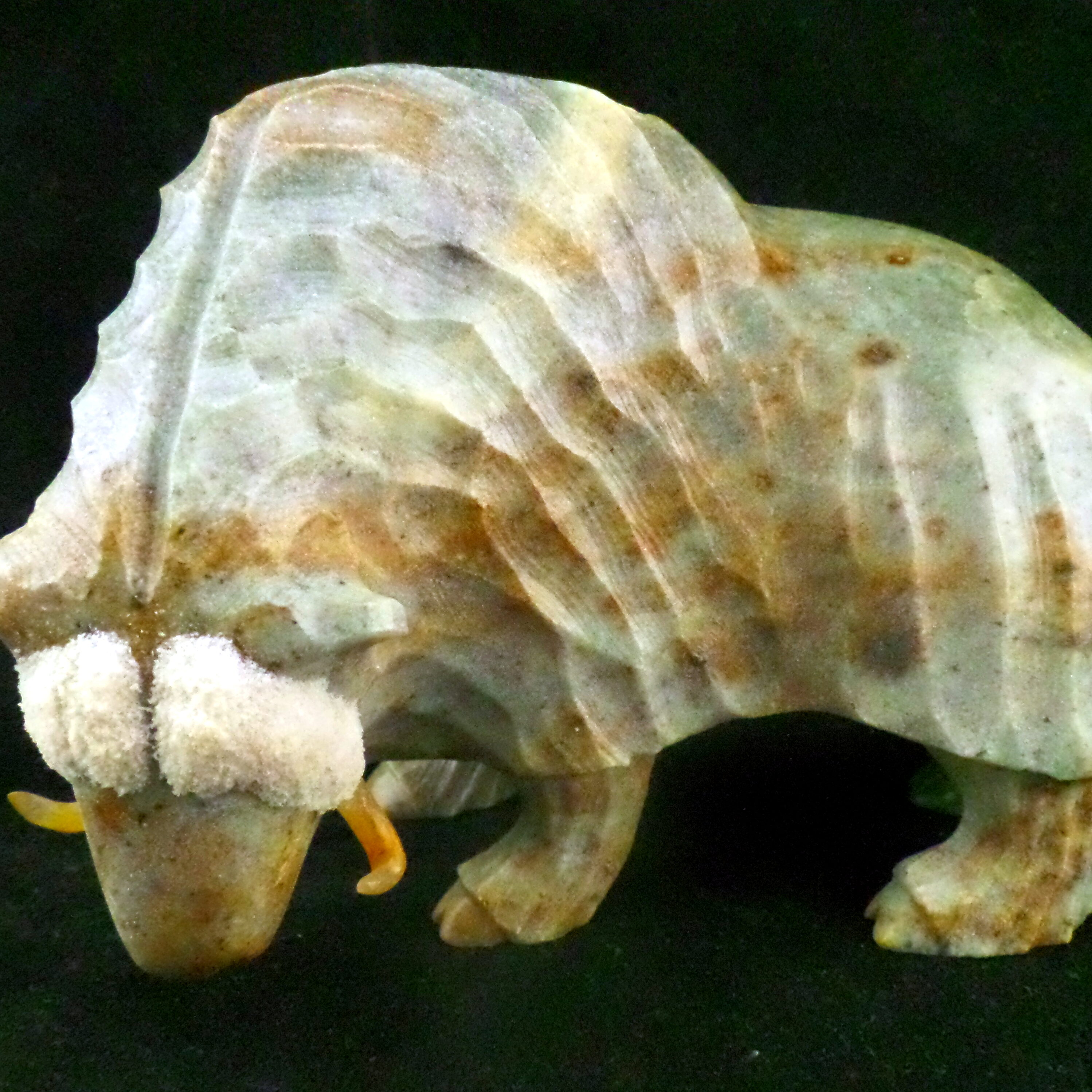
Ryan Taylor
My Uncle
My Uncle Ryan, also born and raised in Tuk.
My Uncles awesome carving would be his Muskoxen, they have so much detail and movement
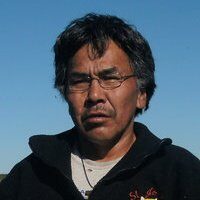
William Taylor
My Uncle
My Eldest Uncle William Taylor
He would be the one I would go to for the old stories of way back when. He is a very wise man, he now resides in Inuvik with his growing family
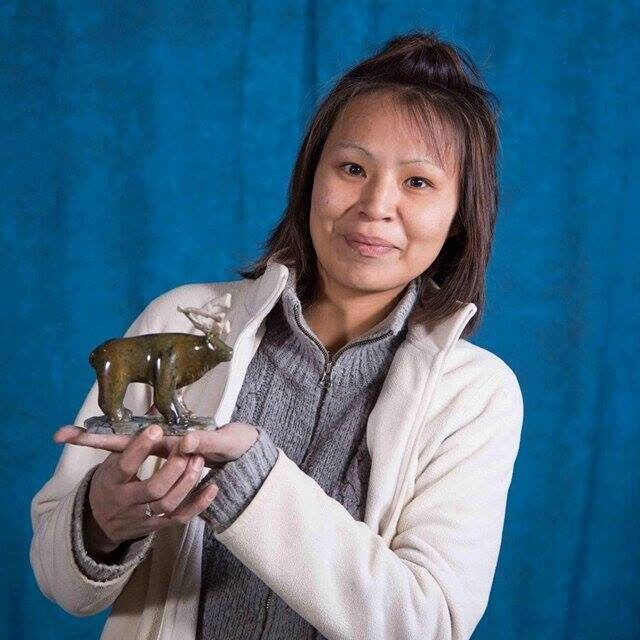
Marion Taylor Pokiak
My Sister
My Sister Marion, she has been mastering carving a little longer than me. She has been specializing in miniatures and enjoys it very much! She is a mother of two beautiful daughters and that is what motivates her to keep going strong!
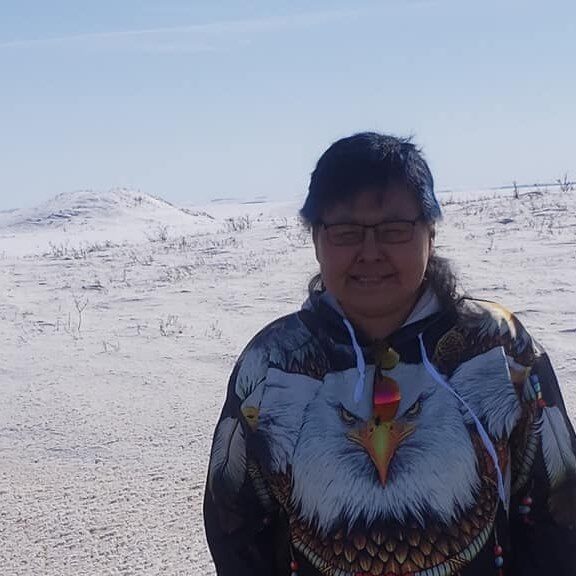
Verna Taylor
My Aunt
My Auntie Verna, along side the only two daughters of my Daduck that has taken on carving with full inspiration from him.
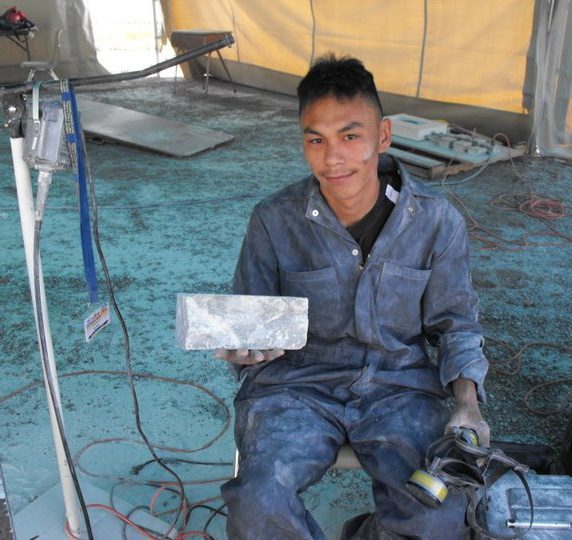
Curtis Taylor
My Cousin
A big thank you to the NWT Arts, here is his bio
I grew up in Tuktoyaktuk and learned to carve from my father and grandfather when I was very young. I would constantly watch them. When I was thirteen, I made my first carving, a very small kayak hunter. It went up for sale and sold right away. Today I carve mostly with caribou antler but also with all sorts of stone. I carve whales or kayak hunters from caribou antler, and things like bears, drum dancers and trees from stone. There always seems to be lots of caribou antler around; people know I carve with it, and always want to give me some or sell me some.
I think about each design for hours and hours – just looking at the antler, and thinking about what image it would lend itself to. It’s the same with stone. I don’t know what design I’ll be carving before I look at the stone. The stone tells me what to carve. If there’s movement in the stone, for example, it will probably be an animal in motion.
Carving is a passion for me. And it’s exciting to see the customers look at my work for the first time, and react to it, and find their own passions for it. My pieces have a lot of movement in them, and things are happening, but they’re not exactly stories yet. I’m still learning to tell stories with my carvings. It’s something I’d like to get better at. I still have much to learn from my elders.
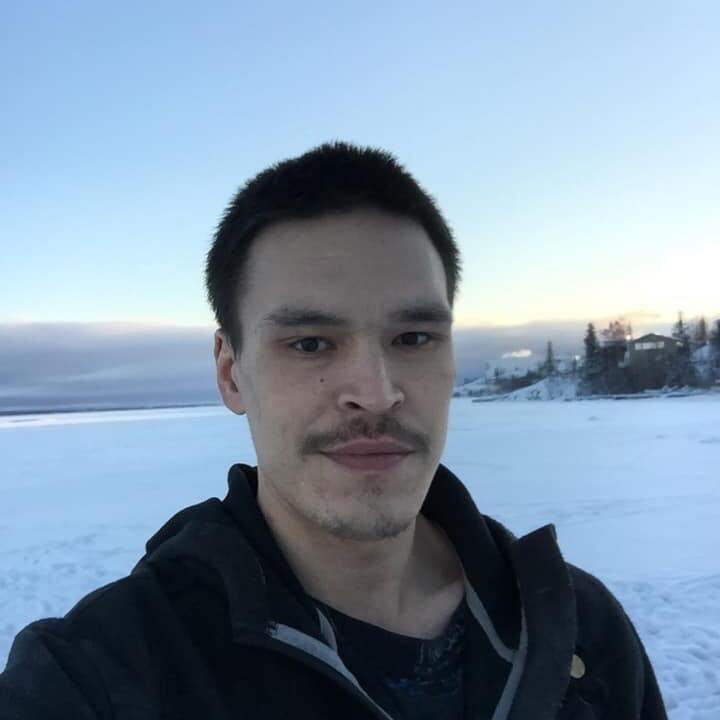
Derek Taylor
My Cousin
Derek is the one I grew up with, hunting birds, catching minnows, and building forts
He is known for his all one piece Inukshuks
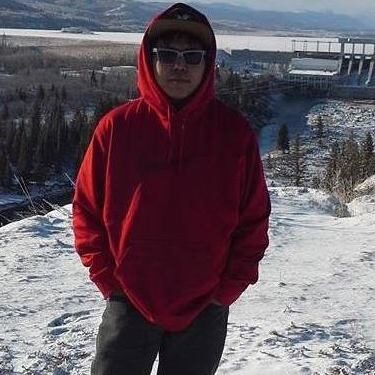
Vaughan Taylor
My Brother
My brother is still young at his carving talent but that doesn't excuse how detailed they are.
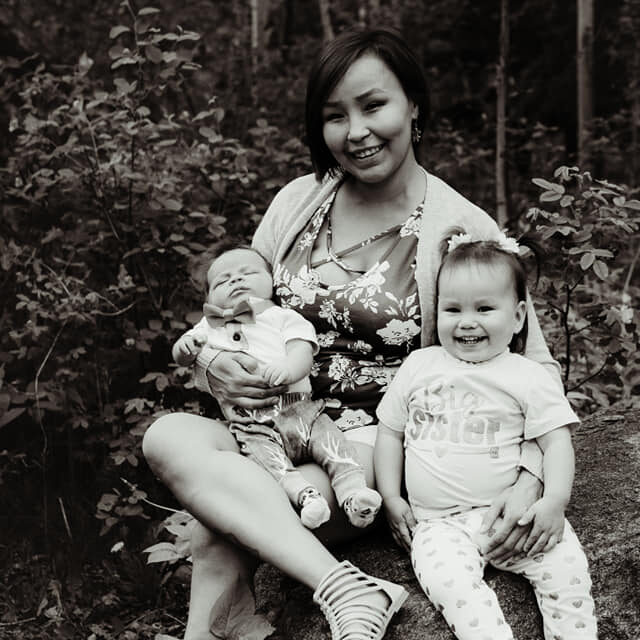
Denise Taylor
My Sister, our Beautiful Angel
May She Rest in Peace
She was a full time Mom. She also got into carving and made a some beautiful jewelry with me.
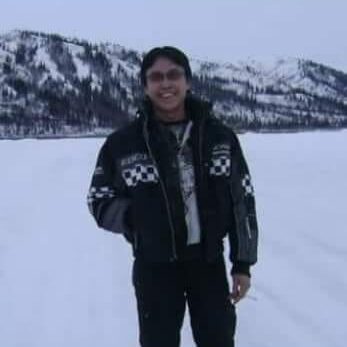
Ronnie Taylor
In Loving Memory, My dear Uncle Ronnie
We all can say, that my Uncle Ronnie was the most talented of all
Rest In Peace Uncle

